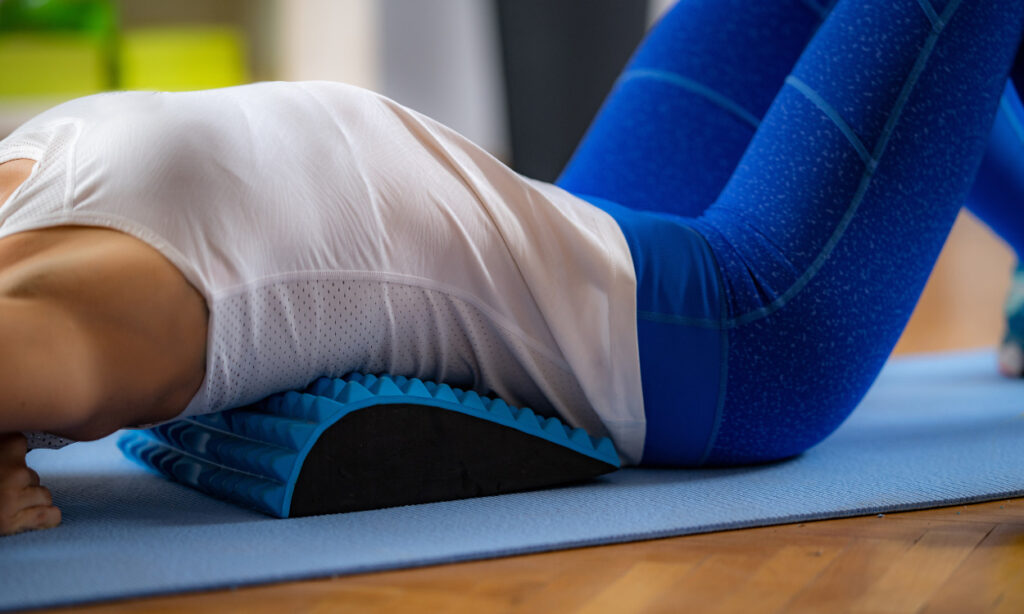Back pain is a prevalent condition that impacts individuals across various age groups and lifestyles. Whether it’s caused by poor posture, muscle strain, or underlying medical conditions, finding relief is a top priority for those suffering from back pain. In this blog, we will explore 10 effective methods for alleviating back pain, offering a comprehensive guide to help you find the right approach for your specific situation.
Maintain Good Posture:
A primary contributor to back pain is inadequate posture.
A primary contributor to back pain is inadequate posture.
Slouching and hunching can put strain on the spine and surrounding muscles. Maintaining good posture while sitting, standing, and walking can significantly reduce the risk of back pain. Invest in ergonomic furniture, use lumbar support, and take breaks to stretch and readjust throughout the day.
Regular Exercise:
Engaging in regular physical activity is crucial for overall health and can play a significant role in preventing and alleviating back pain. This is good for your memory and keeps you away from aging.Focus on exercises that strengthen the core muscles, as a strong core provides better support to the spine. Incorporate activities such as walking, swimming, and yoga into your routine to improve flexibility and reduce muscle tension.
Proper Lifting Techniques:
Improper lifting techniques can strain the back muscles and lead to pain and injury. When lifting heavy objects, bend at the knees, keep the back straight, and use the leg muscles to lift. Avoid twisting the spine while lifting, and if an object is too heavy, ask for assistance.
Heat and Cold Therapy:
Applying heat and cold therapy can be effective in relieving back pain. Use a heating pad or warm compress to relax tense muscles and improve blood flow. Cold packs can help reduce inflammation and numb the area, providing relief from acute pain. Utilize both hot and cold treatments interchangeably for the best outcomes. Use cold when you have injury or trauma for the first 24 hours to prevent swelling,edema and help with calming the Inflamation.
Massage Therapy:
Engaging in massage therapy can be a helpful approach to relieve back pain, as it aids in diminishing muscle tension and fostering relaxation. Professional massages, as well as self-massage techniques using tools like foam rollers, can target specific areas of discomfort. Regular massage sessions along with exercise can contribute to long-term pain relief and improved flexibility.
Stretching Exercises:
Incorporate stretching exercises into your daily routine to enhance flexibility and reduce muscle stiffness. Concentrate on stretching exercises that specifically address the back, hamstrings, and hip flexors. Gentle stretches can help alleviate tension in the muscles and improve overall mobility. Yoga and Pilates are excellent options for incorporating stretching into a regular fitness routine.

Maintain a Healthy Weight:
Excess body weight can contribute to back pain, especially in the lower back. Maintaining a healthy weight through a balanced diet and regular exercise can reduce the strain on the spine and alleviate pressure on the back muscles. Seek advice from a healthcare professional for personalized guidance on attaining and sustaining a healthy weight.
Invest in a Quality Mattress and Pillow:
The quality of your mattress and pillow can significantly impact your back health. A mattress that provides proper support and aligns the spine can contribute to a restful night’s sleep and reduce the risk of waking up with back pain. Choose a pillow that supports the natural curve of your neck to avoid additional strain on the spine.
Stay Hydrated:
Proper hydration is essential for overall health and can play a role in preventing back pain. Water supports the discs in your spine, acting as a shock absorber. Dehydration can lead to reduced disc height and less effective shock absorption, contributing to back pain. Strive to consume a sufficient quantity of water throughout the day. Rule of thumb if you weigh 200 Lbs then drink half the oz in water (100 Oz) of water. Do not drink water during meals . Drink a full glass of water as you wake up and 30 minutes before each meal.
Over-the-Counter Pain Relief:
Over-the-counter pain relievers, such as nonsteroidal anti-inflammatory drugs (NSAIDs), can provide temporary relief from back pain by reducing inflammation. It’s essential to follow the recommended dosage and consult with a healthcare professional if you have any concerns or existing health conditions.
Conclusion:
Alleviating back pain requires a holistic approach that combines lifestyle changes, exercise, and targeted therapies. By incorporating these 10 effective methods into your daily routine, you can take proactive steps towards reducing back pain and improving your overall well-being. Remember to consult with a healthcare professional before starting any new exercise or treatment regimen, especially if you have pre-existing medical conditions.
FAQ:
Can back pain be a sign of a more serious condition?
Yes, in some cases, back pain can be a symptom of underlying medical conditions such as herniated discs, spinal stenosis, or arthritis. If your back pain is severe, persistent, or accompanied by other symptoms, it’s crucial to consult with a healthcare professional for a thorough evaluation.
How long should I use heat or cold therapy for back pain?
The duration of heat or cold therapy depends on the individual and the nature of the pain. Generally, applying heat for 15-20 minutes or using cold packs for 10-15 minutes at a time can be effective. However, it’s essential to monitor your skin’s response and avoid prolonged exposure to prevent skin damage.
Are there specific exercises that can worsen back pain?
While exercise is generally beneficial for back health, some activities may exacerbate back pain if performed incorrectly. High-impact activities, heavy weightlifting without proper form, and certain yoga poses can strain the back. It’s advisable to consult with a fitness professional or physical therapist to tailor an exercise routine that suits your individual needs and limitations.
Please share this and let us know your feedback on this article. Feel free to reach out to me by email or text for individual concerns about the health of yours or loved ones.

